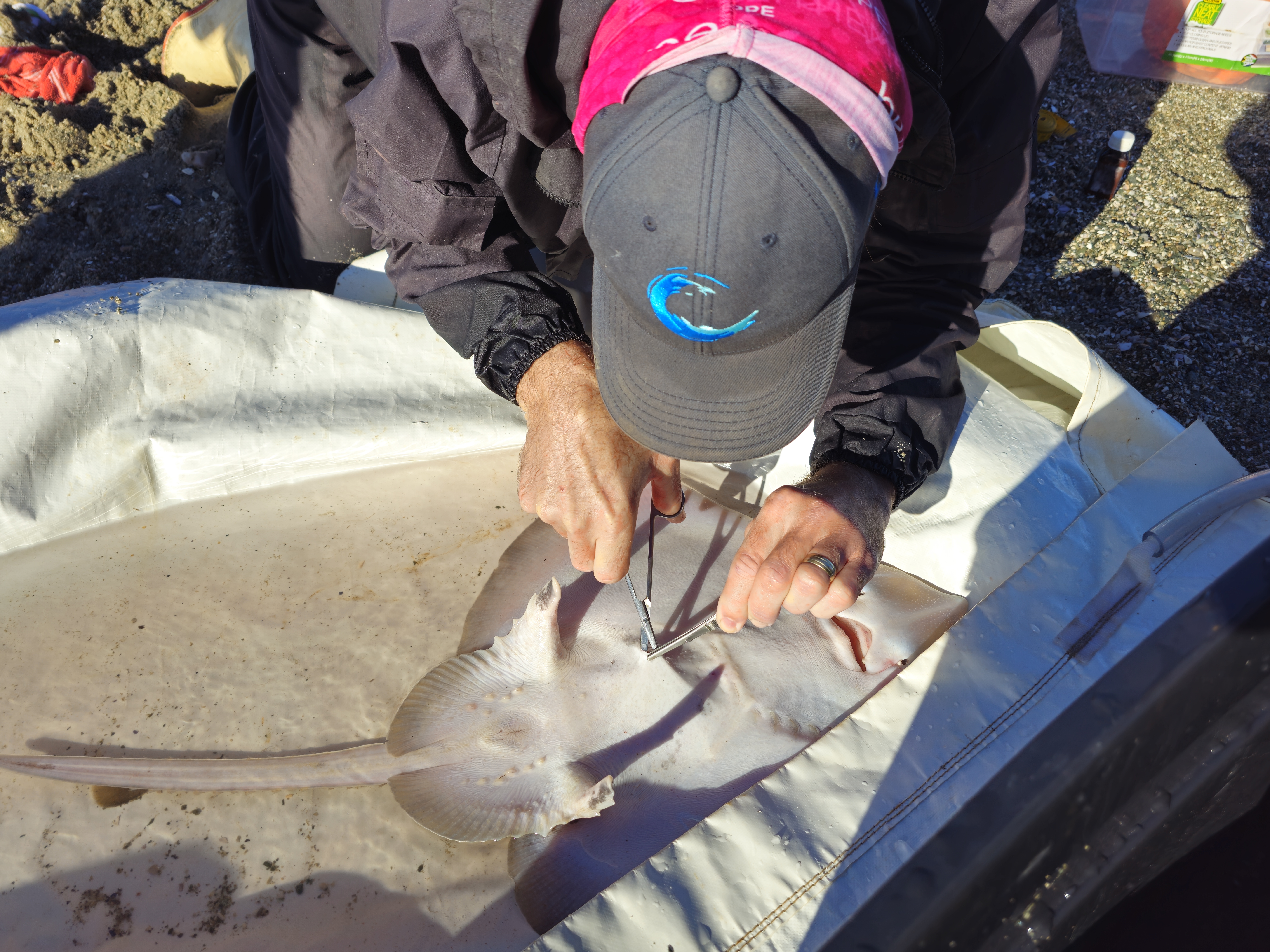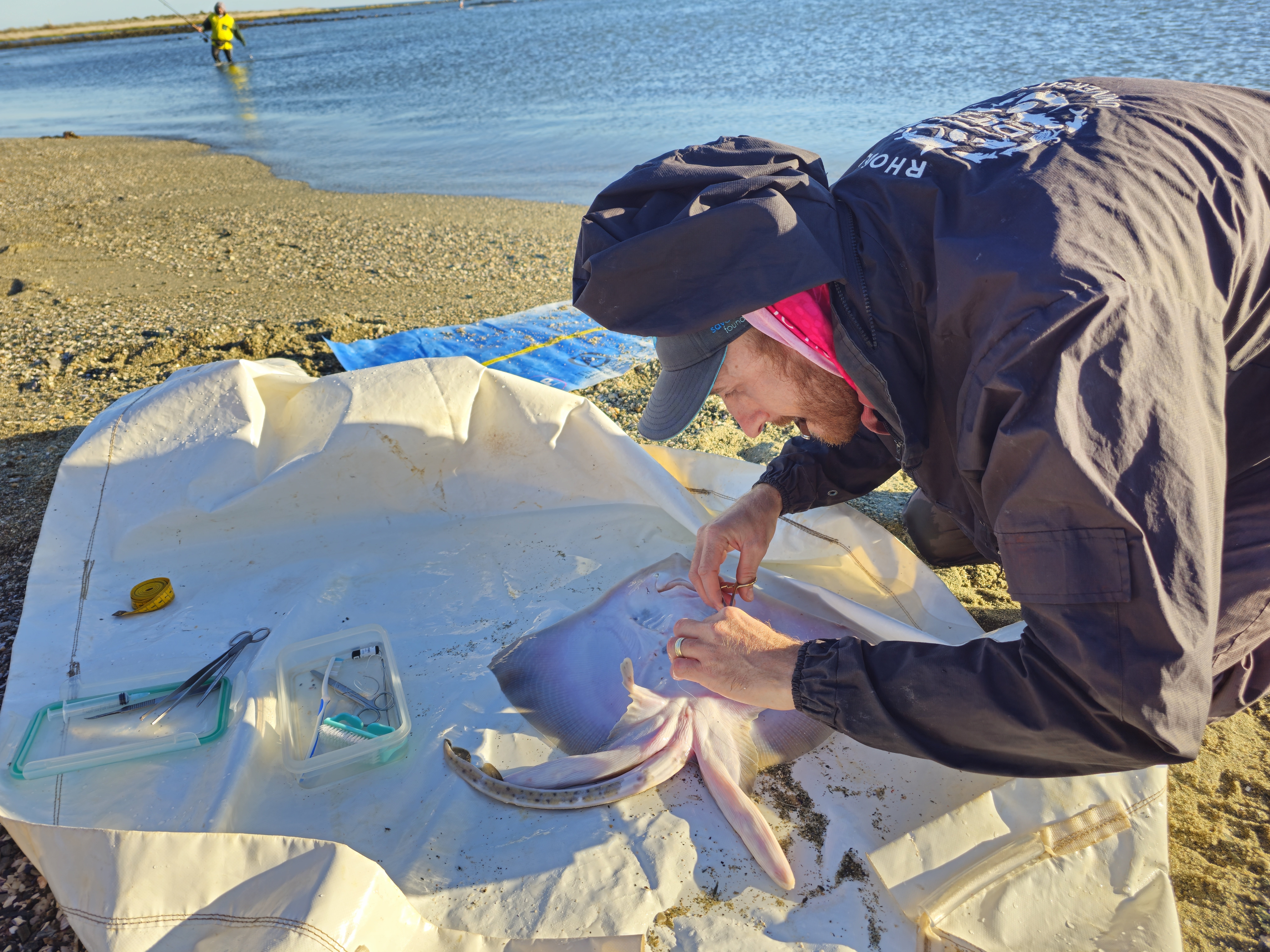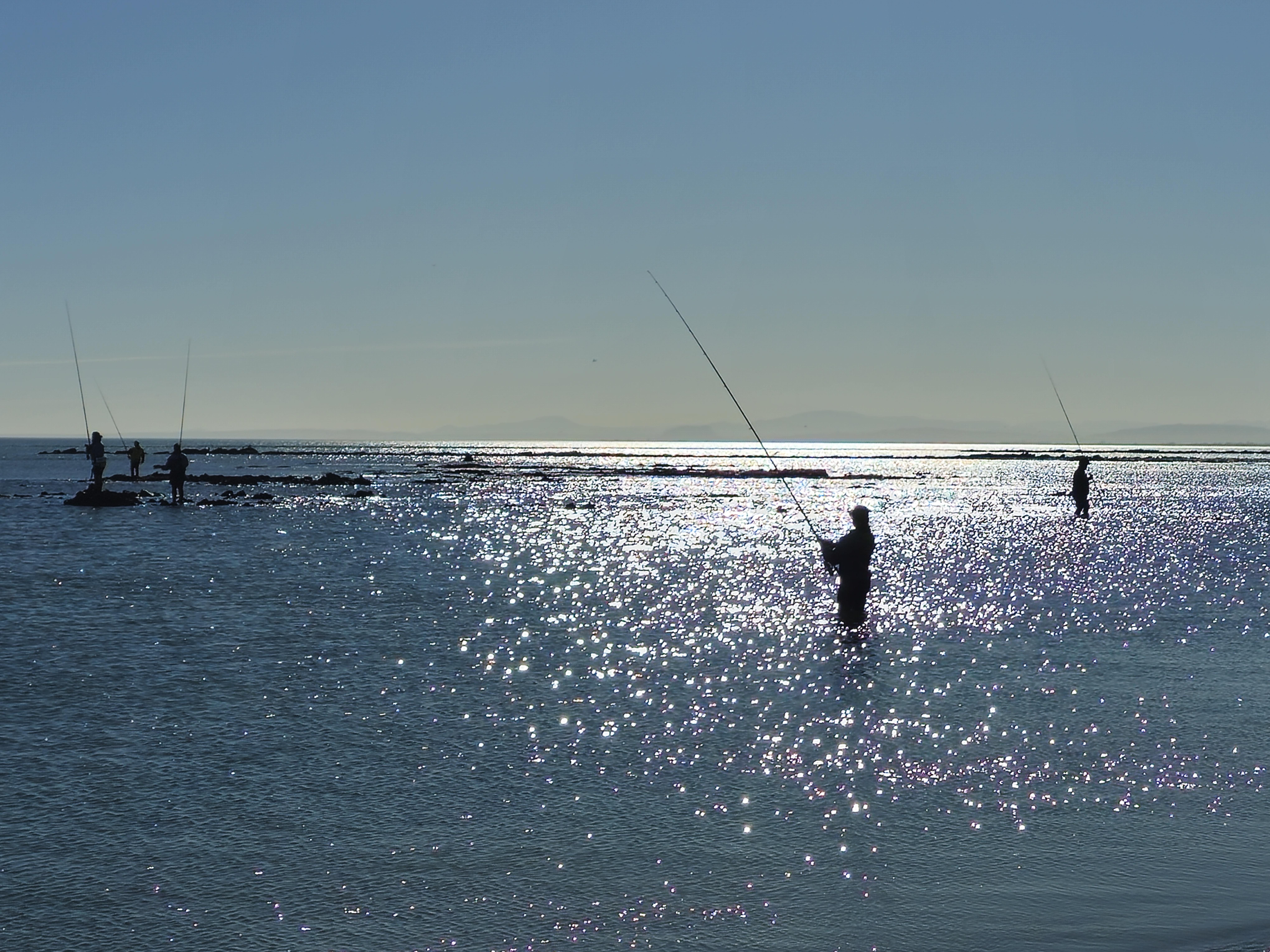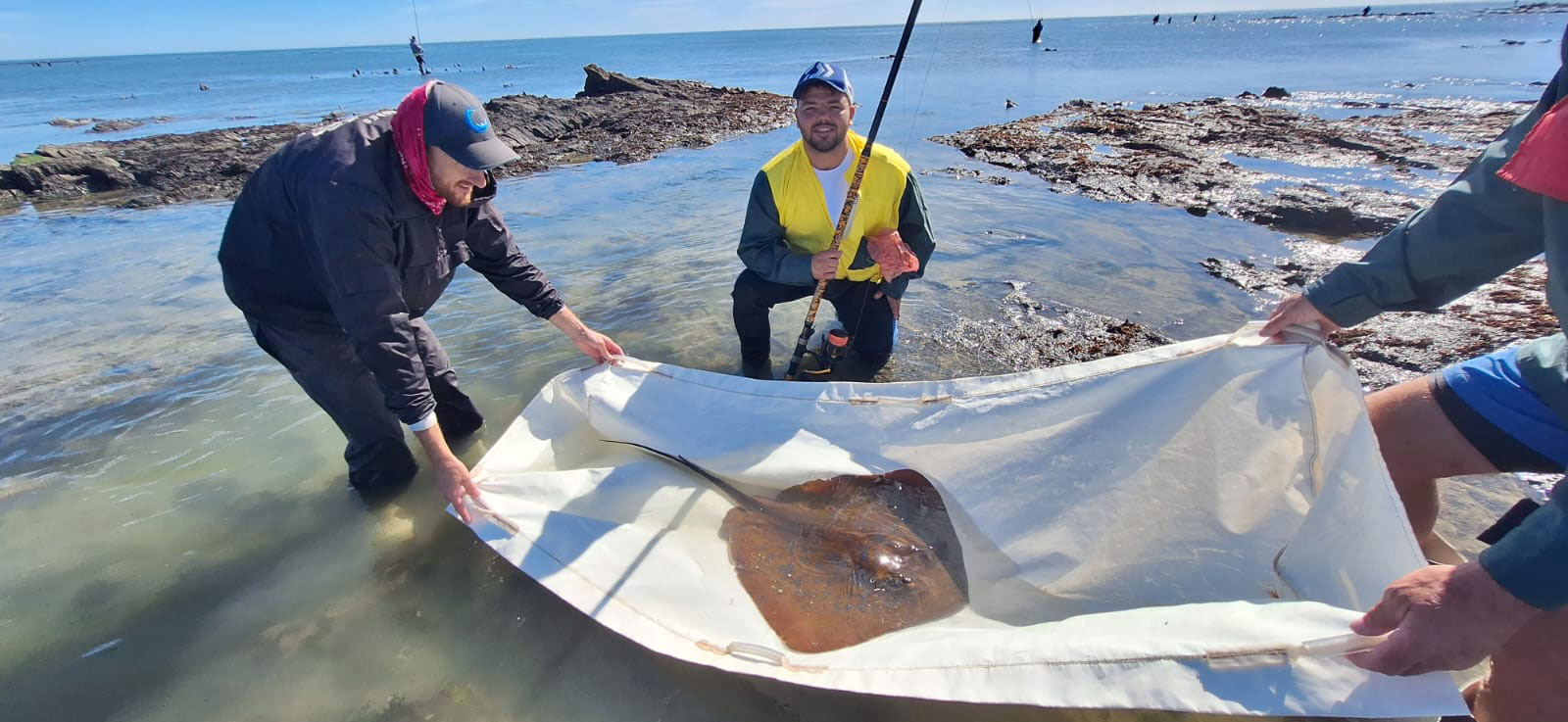The aRAYzing west coast
Over the past 13 years, acoustic telemetry in South Africa has grown from strength to strength. We’ve gone from studying one species in a single location to monitoring the movements of many species in many different locations, largely thanks to the growth, maturity and longevity of the Acoustic Tracking Array Platform. Not only does this backbone of infrastructure cover 2200 km of the South African coastline, but also extends into southern Mozambique, up to a site known as Santa Maria. Despite the extensive coverage of the current ATAP network, the west coast has always remained somewhat of a dead zone in terms of listening power. False Bay has fantastic listening power thanks to the efforts of Shark Spotters, but beyond this, acoustic receivers are few and far between. This is mostly due to there being no deployment collaborator on which we can rely for help. That is, until now.

Matt Parkinson tagging a small biscuit skate. Photo © Michelle Soekoe

Matt Parkinson with another biscuit skate. Photo © Michelle Soekoe
Linking up with Dr Michelle Soekoe from Reel Science Co., who is leading a project on the Critically Endangered common eagle ray (Myliobatis aquila) in South Africa, the ATAP has managed to crept ever so slightly up the west coast, with receivers being deployed at a site known as Varkenvlei in April 2024. Situated approximately 160 km north of Robben Island, this site is certainly no stranger to the avid competitive recreational fisher, and is well known for its massive blue stingrays (Dasyatis chrysonota) and duckbill rays (Aetomylaeus bovinus). ATAP Instrument Technician Dr Matt Parkinson went to assist with the deployment, which was one part of the job. The second? To tag more common eagle rays, of course! Up until this point, eagle rays had only been tagged at Kleinemonde, a small coastal village close to Port Alfred on South Africa’s southeast coast, as well as a handful in False Bay in collaboration with Shark Spotters and Two Oceans Aquarium. As such, it was crucial to get more eagles in the water, particularly at this new west coast site.

A blue stingray gets an acoustic transmitter. Interestingly, these blue stingrays were amongst the largest tagged to date. Photo © Michelle Soekoe

View from the shore at Varkenvlei. Photo © Michelle Soekoe
Armed with an army of keen anglers, the team set off to start their tagging adventure! But despite all the ambition and enthusiasm, April is hardly a decent time for common eagle rays at Varkenvlei. As predicted, eagles were scarce, but excitingly, six were able to be tagged. However, and perhaps more interesting, is the fact that several decent biscuit skates (Raja straeleni) and blue stingrays also came out the water. The decision was made to tag individuals of both these species too, because if there is anything that previous acoustic telemetry work has taught us is that adopting a multispecies approach only strengthens the project. Trying to highlight the importance of an area to one species? It’s a bit of a hard sell. Trying to sell the same idea but for multiple species? Now that’s something to think about! It was a no-brainer when it came to making the decision for both these additional species. The decision to tag biscuit skates was due to the recent work done by Dr Ruth Leeney in Namibia around the Namibian Islands marine protected area, where her and her team (assisted by Dr Parkinson) also tagged biscuit skates. As such, tagging this species at Varkenvlei will afford both teams the opportunity to compare the movements of this generally resident species between two coastal sites approximately 820 km apart. Dr Chantel Elston has also done work on coastal movements of blue stingrays along South Africa’s southeast and south coasts, so tagging more blue stingrays along the west coast can teach us so much more about their movements not only in this region, but also along this stretch of coastline.
Overall, the trip was a success and utterly aRAYzing, with the team catching and tagging six common eagle rays, four biscuits skates, and five blue stingrays. We’re chomping at the bit to get back to the west coast for more tagging and our first receiver rollover and download! As such, we’ll be starting our 2025 with a bang.

Another blue stingray is landed and is getting taken to the shore for tagging. Photo © Dirk
